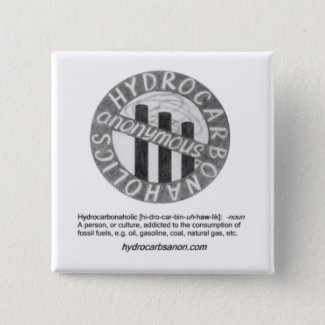With GM now having elbowed its way to the front of the queue, The Detroit Three—with barely a burp or a thank you for the $25 billion they were just given to cajole them in the direction of cars efficient enough to perhaps help them survive—are back at the government nipple.
GM claims, with some credibility, that it has only months to live if it doesn’t get another cash infusion and fast. The combination of pathos and avarice is fascinating. I’m reminded of that sweet little plant in Little Shop of Horrors—the one that needed human blood (oh just a LITTLE more) to survive.
I don’t think many civilians, myself included, know what the bankruptcy of one or more of the Detroit Three would look like (I’m seeing more and more publications adopt this over Big Three, for obvious reasons).
Speculation ranges from a hardnosed: not much;
To. . . apocalyptic: The. World. Will. End.
I don’t have any philosophical problem with government intervention. Within reason, and under the right circumstances, I don’t have any problem with government loans or subsidies. I have a great deal of sympathy for the plight of the line workers, both those directly employed by the industry and in the ancillary industries that domestic auto manufacturing supports. All of that said, it isn’t clear to me who, if anyone, would be meaningfully helped by another bailout or series of bailouts.
It has been alleged that almost a third of health care spending in the
Similarly. . . Well going back more than thirty years now, the American automobile industry reminds me of those cancer patients still smoking by holding the cigarettes to the holes in their throats. Doesn’t make sense to give them money for cigarettes; not clear that having them on oxygen is good for them or for anyone within the blast zone either.
David Halberstam pointed out one evocative example more than twenty years ago, in “The Reckoning: How Japan Beat the United States in the Auto Industry War and Rewrote the Rules of International Business Competition.”
The short version is: In 1958 Ford invented E-Coat painting technology (give paint a positive charge; give auto body parts a negative charge; you get full coverage in every nook and cranny and substantially increased rust resistance). This quickly became the industry standard, foreign and domestic. Ford, however, took until 1975 to get the technology into *half* of their factories; it wasn’t until 1984—more than 25 years later!—that they finally upgraded every one of their plants.
Can American industry innovate? Yes. Are they willing to invest in the future at the expense of this quarter’s profits?
Airlines mostly keep flying through bankruptcy; retail chains also, for the most part, remain in business as they work through Chapter 11; not clear why the same would not be true of the Shrinking Three.
I oppose capital punishment and can’t therefore in good conscience advocate for executing a large swath of the American Automotive Nomenklatura (although we might consider this a form of euthanasia). If the federal government is to step in (which seems all but inevitable): 1. Executives should have their epaulettes torn from their shoulders, their ill-gotten gains stripped from their Swiss bank accounts, and be shown the door—Lead Parachutes for Everyone! 2. Everything possible should be done to safeguard the pension and medical benefits of retirees. 3. The government should have its loans secured by the companies’ assets. 4. There should be ironclad fuel economy standards imposed on the industry.
President-Elect Obama says he wants to rejuvenate the American Economy by getting us off imported oil and facilitating the growth of a sustainable transportation and industrial infrastructure. Well, Green Power to him! He’s likely to be involved in an automotive bailout even before he takes office. If he does what he’s said he wants to do, I’ll be very happy.








1 comment:
the commentary I heard about working through Chapter 11 was speculation that most people would be too worried to buy a car from a company in bankruptcy. If there's no more company to honor the warrantee...people don't want to take that risk. GM and Chrysler both have plug-in technology in the wings, so I would support a bailout if it is mandated that they begin selling that technology NOW in multiple vehicles. Ford has taken a wait-and-see approach for plug-ins and electrics, but have spent billions on any number of technologies that will never see the showroom. I say part of the requirement for bailout is for them to halt all R&D for hydrogen vehicles until they're profitable.
Post a Comment